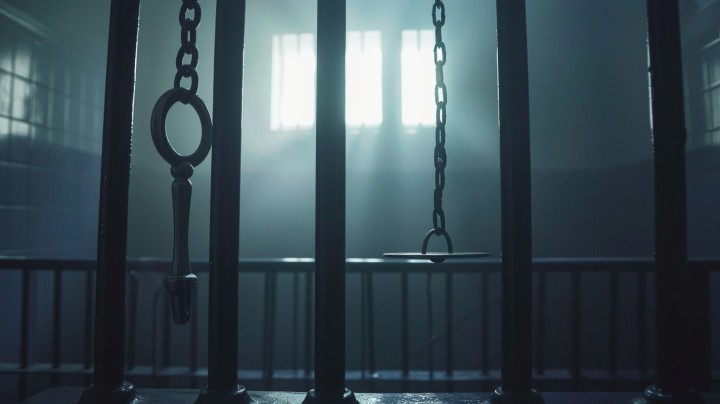Introduction
Being arrested and detained in jail can be a stressful and confusing experience. One of the primary concerns for anyone in this situation is how to secure their release. This article provides a comprehensive guide on whether you can bond yourself out of jail, the different types of bail, the steps involved in the process, and key considerations to keep in mind.
Understanding Bail and Bond
What is Bail?
Bail is a set amount of money or other form of security that a defendant provides to the court to ensure they will return for their trial and other court appearances. It acts as a financial guarantee that the defendant will comply with the legal process.
Types of Bail
There are several types of bail, each with its own conditions and requirements:
- Cash Bail: The defendant pays the full amount of bail in cash.
- Surety Bond: A bail bondsman pays the bail amount on behalf of the defendant, usually for a fee.
- Property Bond: The defendant offers property as collateral for bail.
Can You Bond Yourself Out?
Self-Bonding Explained
In some jurisdictions, it is possible to bond yourself out of jail. This typically involves paying the bail amount directly to the court, either in cash or through other accepted methods. Self-bonding means you do not require the services of a bail bondsman or a third party to post bail on your behalf.
Conditions for Self-Bonding
To bond yourself out, you must meet certain conditions:
- Sufficient Funds: You need to have enough money to cover the full bail amount.
- Compliance with Court Requirements: You must agree to all conditions set by the court, such as attending all court dates and adhering to any restrictions imposed.
Types of Bail Bonds
Cash Bail
Cash bail is the simplest form of bail where the defendant or a third party pays the full bail amount in cash. If the defendant attends all required court appearances, the bail amount is typically refunded at the end of the trial, minus any fees or fines.
Surety Bond
A surety bond involves a bail bondsman who agrees to pay the bail amount on behalf of the defendant. The defendant usually pays the bondsman a non-refundable fee (typically 10-15% of the bail amount) for this service.
Property Bond
A property bond allows the defendant to use real estate or other valuable property as collateral for bail. The court places a lien on the property, which may be forfeited if the defendant fails to appear in court.
The Bail Bond Process
Steps to Post Bail
- Determine Bail Amount: The court sets the bail amount based on the severity of the crime and other factors.
- Choose a Bail Method: Decide whether to pay cash, use a bondsman, or offer property.
- Complete Paperwork: Fill out the necessary forms and agreements required by the court.
- Pay the Bail: Submit the payment or collateral to the court or bondsman.
- Release from Jail: Upon acceptance, the defendant is released from jail with the obligation to attend all court proceedings.
Using a Bail Bondsman
If you cannot afford to pay the full bail amount, you can use a bail bondsman. The bondsman charges a fee and posts the bail on your behalf, assuming responsibility for ensuring you appear in court.
Factors Affecting Bail Amount
Severity of the Crime
The seriousness of the charges significantly impacts the bail amount. More severe crimes typically result in higher bail amounts.
Criminal History
A defendant’s past criminal record is considered when setting bail. Those with extensive criminal histories may face higher bail or be denied bail altogether.
Flight Risk
The likelihood that a defendant might flee before trial is another critical factor. High flight risk defendants may have higher bail or be required to meet additional conditions.
Legal Rights and Considerations
Right to Bail
In most cases, defendants have the right to bail, except in severe cases such as capital offenses. This right ensures that individuals are not unfairly detained before their trial.
Conditions of Release
Courts may impose certain conditions on released defendants, such as travel restrictions, regular check-ins, or restraining orders. Non-compliance with these conditions can result in re-arrest and forfeiture of bail.
Steps to Take After Posting Bail
Returning to Court
After posting bail, it’s crucial to attend all scheduled court appearances. Missing a court date can lead to bail forfeiture and additional legal consequences.
Compliance with Bail Conditions
Ensure that you comply with all conditions set by the court. This includes avoiding contact with certain individuals, adhering to travel restrictions, and any other requirements imposed.
Consequences of Failing to Appear
Bail Forfeiture
If you fail to appear in court, the bail amount may be forfeited, meaning you lose the money or property posted as bail.
Additional Charges
Failing to appear can result in additional charges, such as contempt of court or bail jumping, which can further complicate your legal situation.
How to Prepare for Court After Release
Legal Representation
Hiring an experienced attorney is crucial for navigating the legal process and building a strong defense. Your lawyer can guide you on the best course of action and represent your interests in court.
Gathering Evidence
Collecting and organizing evidence that supports your case is vital. This includes obtaining witness statements, documentation, and any other relevant materials.
Alternatives to Traditional Bail
Recognizance Release
In some cases, the court may release a defendant on their own recognizance (OR), meaning they do not have to pay bail but must promise to appear in court. This option is typically reserved for low-risk defendants.
Pretrial Services
Pretrial services programs offer an alternative to traditional bail, providing supervision and support to defendants while they await trial. These programs may include regular check-ins, counseling, and other services designed to ensure court compliance.
FAQs
What happens if I can’t afford bail?
If you cannot afford bail, you may seek assistance from a bail bondsman, request a bail reduction hearing, or explore alternatives like recognizance release or pretrial services.
Can bail be refunded?
Yes, bail can be refunded if the defendant appears at all required court dates and complies with all conditions of release. However, fees paid to a bail bondsman are non-refundable.
How long does it take to get out on bail?
The time it takes to get out on bail can vary, but typically ranges from a few hours to a day, depending on the jail’s processing procedures and the availability of the necessary funds or collateral.
What is a bail hearing?
A bail hearing is a court proceeding where a judge determines whether to grant bail to a defendant and sets the bail amount and conditions of release.
Can conditions of bail be changed?
Yes, bail conditions can be modified. Defendants or their attorneys can request a hearing to seek changes to bail conditions, such as reducing the amount or altering restrictions.
What are the responsibilities of a co-signer?
A co-signer, also known as a guarantor, is responsible for ensuring that the defendant appears in court and complies with bail conditions. If the defendant fails to do so, the co-signer may be liable for the full bail amount.
Conclusion
Bonding yourself out of jail is a viable option in certain circumstances, provided you have the necessary funds and comply with court requirements. Understanding the bail process, the types of bail available, and the factors affecting bail decisions can help you navigate this challenging situation. Always consult with legal professionals to ensure your rights are protected and to make informed decisions about your release.









